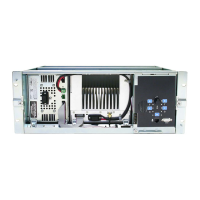TB8100 Service Manual Reciter Circuit Description 53
© Tait Electronics Limited September 2006
Modulation Based
on Varicap Diodes
Modulation on the VCO is provided by an auxiliary varicap-based control
circuit which provides a modulation gain of 5kHz/V
p
.
Low Noise Amplifier An N-channel dual gate MOSFET is used as a broad band matched Class A
low noise amplifier. It has internal self-bias circuitry, and the output
provides enough RF power to drive the following stages.
Harmonic Filter The VCO has a high second harmonic content. A third order low pass
elliptic filter is used to attenuate this content.
Fixed Slope
Attenuator, Final
Driver and Fixed
Attenuator
To provide a drive of +20dBm, a silicon-based BJT transistor is used as a
broad band matched Class A final driver. To maintain a fixed input level, a
fixed slope attenuator is introduced at the input to the final driver so that the
attenuation rate (slope) decreases with an increase in frequency. A fixed
attenuator provides a signal level of +11dBm ±2dB to the input port of the
PA, providing better reverse isolation.
The H-band VCO frequency spans from either 380MHz to 420MHz,
400MHz to 440MHz, 440MHz to 480MHz, or 470MHz to 520MHz,
according to the product type.
The K-band reciter uses two VCOs to span from either 762MHz to
776MHz, or 850MHz to 870MHz, according to the product type.
The L-band reciter uses two VCOs to span from either 850MHz to
870MHz, or 927MHz to 941MHz, according to the product type.
Refer to “Identifying the Reciter” on page 70 for more information on
reciter product types.
2.5.5 Exciter Control Circuit
This circuit powers up and shuts down the exciter final driver in a controlled
manner. During transient and cycling keying conditions, the exciter must
power up and shut down in a specified time sequence to reduce adjacent
channel power. The exciter control circuit uses Ex_Key to power up or shut
down the VCO final driver, and PA_Key to power up or shut down the PA
driver.

